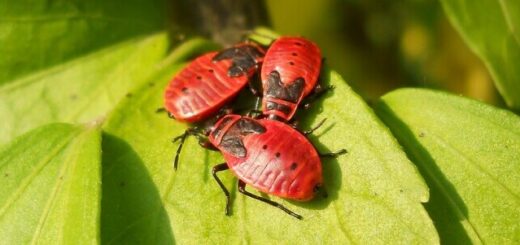Unraveling The Feline Tapestry: From Dinosaur Kinship To Domestic Bliss
Today i’d like to discuss what dinosaur cats evolved from.
So.. What dinosaur did cats evolve from?
All modern carnivorans, including cats, trace their evolutionary roots back to miacoids, which roamed the Earth approximately 66 to 33 million years ago. While specific connections to dinosaurs are indirect, the feline lineage shares a common ancestry with the prehistoric inhabitants of our planet. The truth of the matter is, many dinosaurs evolved into birds but miacoids appear to be the closest lineage to a cat that we are aware of and they graced earth after the dinosaurs we have come to know and lover were wiped out. Both miacoids and dinosaurs are now extinct but we are lucky to have some very distant potential descendants around today!
Cats, those enigmatic creatures that prowl our homes, have a lineage deeply intertwined with the evolution of Earth’s diverse inhabitants. From their prehistoric predecessors to the beloved domestic companions of today, the journey of cats is a saga spanning millions of years, filled with evolutionary twists and turns.

The ‘First Cat’
Around 30 million years ago, Proailurus, meaning “before the cat” or “Leman’s Dawn Cat,” marked the emergence of the first “true cat.” This compact feline laid the groundwork for the diverse felidae family.
Felidae Evolution
Following the reign of Proailurus, the fossil record indicates a mysterious “cat gap” of about 10 million years, where felid fossils are sparse. The turning point came with the appearance of a new genus, Pseudaelurus, setting the stage for the proliferation of feline species.
The Cat Gap
Approximately 25 to 18.5 million years ago, a significant gap in the fossil record, the “cat gap,” presents a challenge for paleontologists. The causes, whether climate change, habitat shifts, or evolutionary trends, remain debated.

From Wild Origins to Domestic Companions
The domestication journey of cats is rooted in wild ancestors, particularly Felis silvestris lybica, dwelling in the Fertile Crescent during the Neolithic period and ancient Egypt in the Classical period. The debate persists over whether Felis silvestris or Felis lybica is the true progenitor of our domestic companions. We all know cats have a mind of their own and no mercy in the moment whcih could have been passed on as a survival technique from when they had to fend for themselves in the wild.
The Beginnings of Domestication
The cat’s path to domestication is a nuanced tale of genetic proximity and the risk of interbreeding. Felis silvestris is considered the closest genetic match, but the complex relationship between Felis silvestris and Felis lybica adds layers of uncertainty. One thing is for certain, cats have evolved greatly in many directions to have some very unique characteristics suitable for the many lifestyles in which they now live.
The Cat’s Role in Ancient Civilizations
Cats have been revered and incorporated into the fabric of ancient civilizations, notably in Egypt, where they were associated with deities, revered for their hunting prowess, and even mummified.
Cats Migrating Throughout the World
From their origins, cats migrated globally, adapting to diverse environments. They became both wild and domesticated, leaving their paw prints on every continent. Not a shock given that they all appear to think they run the world!

The Emergence of Different Cat Breeds and Types
Selective breeding and environmental adaptation have given rise to a multitude of cat breeds, both wild and domestic, showcasing the incredible diversity within the feline family.
Common Traits Among All Types of Cats
Retractable claws, sharp teeth, keen senses, and a carnivorous diet are common traits shared by all cats, whether large, wild species or small, domesticated companions.

Large Feral or Wild Cats vs. Small Domesticated Pet Cats
The distinction between large, feral cats and small domesticated pets reflects the adaptive nature of these creatures to their respective environments, showcasing how evolution has shaped their sizes and behaviours.
Conclusion
The feline journey, from ancient ancestors to modern-day companions, is a captivating narrative of survival, adaptation, and companionship. Cats, whether wild or domestic, continue to enchant and intrigue, leaving an indelible mark on the tapestry of Earth’s history. Despite not having descended directly from a specific dinosaur they are still pretty darn cool!
FAQ
Q: What is the oldest known cat ancestor?
A: Proailurus, which appeared around 30 million years ago, is considered the oldest known cat ancestor.
Q: Would a lion recognize a domestic cat?
A: Recognition is uncertain, but lions and domestic cats share common ancestry. Factors like scent and behaviour might influence recognition.
Q: What was the first cat breed?
A: The concept of cat breeds emerged later in history. The Egyptian Mau, originating from ancient Egypt, is often considered the first recognized cat breed.
Q: Are cats just mini tigers?
A: While domestic cats share a common ancestor with big cats like tigers, they have distinct characteristics and behaviours shaped by domestication. Obviously they are quite different in size, strength and colour on a physical level as well.
Q: Are people or cats more closely related to dinosaurs?
A: Humans are not closely related to dinosaurs. Cats, however, belong to the order Carnivora, which has distant relatives that lived alongside dinosaurs despite not being directly related to them.
Thanks for reading! If you liked this article please leave us a comment and check out some of our others! Have a specific query you want answered? Shoot us an e-mail at contact@commoncuriosities.com
The Purr-fect Mystery Unveiled: Why Do Cats Lick People?
What do cat whiskers do – More than a cute face
Looking for some further reading on cats? Check out the articles below!
PBS Nature – the making of the cat




